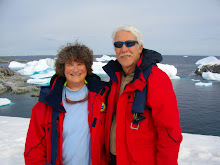Chile quake survivors should thank Milton Friedman
Why did Chile survive a much, much larger earthquake with a fraction of the damage to building compared to Haiti?
Brett Stephens in WSJ
Milton Friedman has been dead for more than three years. But his spirit was surely hovering protectively over Chile in the early morning hours of Saturday. Thanks largely to him, the country has endured a tragedy that elsewhere would have been an apocalypse.
Earthquake magnitudes are measured on a logarithmic scale. The earthquake that hit Northridge in 1994 measured 6.7 on the Richter scale. But its seismic-energy yield was only half that of the 7.0 quake that hit Haiti in January, which was the equivalent of 2,000 Hiroshima-sized bombs exploding all at once.
By contrast, Saturday's earthquake in Chile measured 8.8. That's nearly 500 times more powerful than Haiti's, or about one million Hiroshimas. Yet Chile's reported death toll—711 as of this writing—was a tiny fraction of the 230,000 believed to have perished in Haiti.
[Photo: Chile's presidential palace survived the quake intact. Haiti's did not.]
It's not by chance that Chileans were living in houses of brick—and Haitians in houses of straw—when the wolf arrived to try to blow them down. In 1973, the year the proto-Chavista government of Salvador Allende was overthrown by Gen. Augusto Pinochet, Chile was an economic shambles. Inflation topped out at an annual rate of 1000%, foreign-currency reserves were totally depleted, and per capita GDP was roughly that of Peru and well below Argentina's.
What Chile did have was intellectual capital, thanks to an exchange program between its Catholic University and the economics department of the University of Chicago, then Friedman's academic home. Even before the 1973 coup, several of Chile's "Chicago Boys" had drafted a set of policy proposals which amounted to an off-the-shelf recipe for economic liberalization: sharp reductions to government spending and the money supply; privatization of state-owned companies; the elimination of obstacles to free enterprise and foreign investment, and so on.
... As for Chile, Pinochet appointed a succession of Chicago Boys to senior economic posts. By 1990, the year he ceded power, per capita GDP had risen by 40% (in 2005 dollars) even as Peru and Argentina stagnated. Pinochet's democratic successors—all of them nominally left-of-center—only deepened the liberalization drive.
Result: Chileans have become South America's richest people. They have the continent's lowest level of corruption, the lowest infant-mortality rate, and the lowest number of people living below the poverty line.
Chile also has some of the world's strictest building codes. That makes sense for a country that straddles two massive tectonic plates. But having codes is one thing, enforcing them is another. The quality and consistency of enforcement is typically correlated to the wealth of nations. The poorer the country, the likelier people are to scrimp on rebar, or use poor quality concrete, or lie about compliance. In the Sichuan earthquake of 2008, thousands of children were buried under schools also built according to code....


0 Comments:
Post a Comment
<< Home